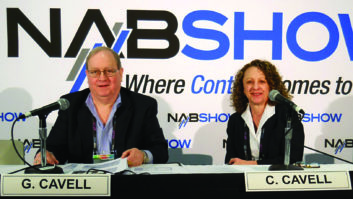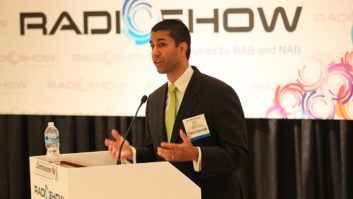Station Conversion Is Only One Part of the Process
Now that it seems like the conversion to HD Radio is gaining momentum, let’s take a closer look at what really needs to happen for the process to move to a successful conclusion.
As with almost any broadcasting system’s conversion, its impact will be felt well beyond the transmitter site, and it will deeply affect the business and legal elements of station operations. It will also have impact on the consumer electronics marketplace.
We’ll start this time with a look at upcoming regulatory change, which necessarily serves as foundation and catalyst for other developments.
Hot topics
The FCC recently closed its comment period for NRSC-5, and by adding these to the many other comments received last year in response to the FNPRM & NOI on FCC 04-99, it should have all the input it needs to move from its current interim rules adopted in 2002 to final ones for U.S. digital radio. When this will actually happen is anyone’s guess, but we can surmise on some of the key points likely to be addressed in the anticipated “Second Digital Audio Broadcasting Report and Order.”
Most controversial and divergent among the comments to NRSC-5 was the interference potential of AM IBOC service. You’ll recall that the interim rules allow only daytime AM IBOC operation, and some broadcasters have called for the commission to allow full-time operations in its final rules (as the commission has hinted it might do in the past). Yet numerous other comments brought forth evidence of harmful interference caused by AM IBOC even under daytime operations.
The FCC will have difficulty resolving the diversity of opinions on this issue, and however it rules, subsequent action is likely to be undertaken by some party. So we may not see the last word on AM’s digital conversion for some time.
The other key regulatory component awaited is full authorization of FM IBOC multicasting, which under interim rules is only allowable under special permission. This is probably the area of greatest recent change and potential early impact of IBOC, and it’s an issue that is still resonating through the radio business from top to bottom, as the industry tries to come to terms with it and grasp its ultimate value. Comment has been strongly positive on multicasting, but the issue presents regulatory challenges nonetheless.
Careful what you wish for
On one hand, commissioners have gone on record extolling the virtues of multiple new services that IBOC can bring to American consumers. Yet they also have taken so much heat from Congress and the public on media ownership and consolidation recently that they may be reluctant to overtly allow anything that looks like they are giving more channel capability to incumbent broadcasters.
NRSC-5 calls for up to eight services to be carried on a single IBOC FM channel. One way to spin this is that it allows broadcasters great flexibility to provide increased public service, without being forced to make pure binary decisions on carriage of content based primarily on revenue considerations. Another angle is that it can help terrestrial broadcasters compete with satellite radio, and thereby provide increased local services. But from another perspective, allowing multicasting can also be interpreted as raising the ceiling on the number of services a single broadcaster is able to control – from eight to 43 in the largest markets.
(You’ll recall that current limits allow for an operator to own up to eight stations in a single market, up to five of which could be FMs. Under NRSC-5, those five FMs could provide a maximum of 40 services, plus three AMs – which would remain limited to a single service – totaling 43 services at a maximum.)
A countering argument, of course, is that those single-market ownership caps are scaled to the number of stations in the market – the abovementioned limits of eight total and five in either band applies only in markets having 45 or more stations, for example, and the limits decrease with the number of stations in the market. Because all FM stations in the market would be similarly enabled to expand their service, the relative proportion of services controlled by a single operator theoretically should not change.
One could also argue that the eight-service multicasting level is an extreme case that is unlikely to ever be achieved or served on a full-time, simultaneous basis, but if final rules are based on NRSC-5 as written, they would imply that such maximum service levels would be permitted.
‘Questions’
So the commission will have to walk a fine political line here, balancing the value of multicasting with the perception of further relaxation of ownership limits.
This is not an academic concern. It was addressed directly by Commissioner Michael Copps in his separate statement accompanying last year’s FNPRM. Here’s an excerpt:
“I …believe that multicasting raises questions about our ownership rules. As the Further Notice recognizes, digital radio and multicasting hold out the promise of new opportunities to enhance diversity and to promote localism. But there may also be some risks involved here, particularly as regards changes in the local competitive landscape. Might not the ability to multicast several streams in a community instead of just one have at least some effects on the competitive landscape in that particular media market? What does it mean for competition if a company that would be permitted to own eight radio stations in a market also obtains the ability to multicast many more programming streams? Does that really promote competition, localism and diversity in the digital era?”
Therefore, notwithstanding the industry’s recent embrace of the multicasting movement, full approval in its current form is not necessarily assured. And despite its seemingly rosy future at present, the adoption of any significantly burdensome or costly new regulatory requirements for broadcasters who implement multicasting could kill the movement as quickly as it arose.
If multicasting truly is IBOC’s killer app, how the final rules read on it will be critical to the U.S. digital radio transition as a whole – perhaps more than any other single regulatory element.
Next time we’ll consider how the receiver marketplace might react in the IBOC era.











